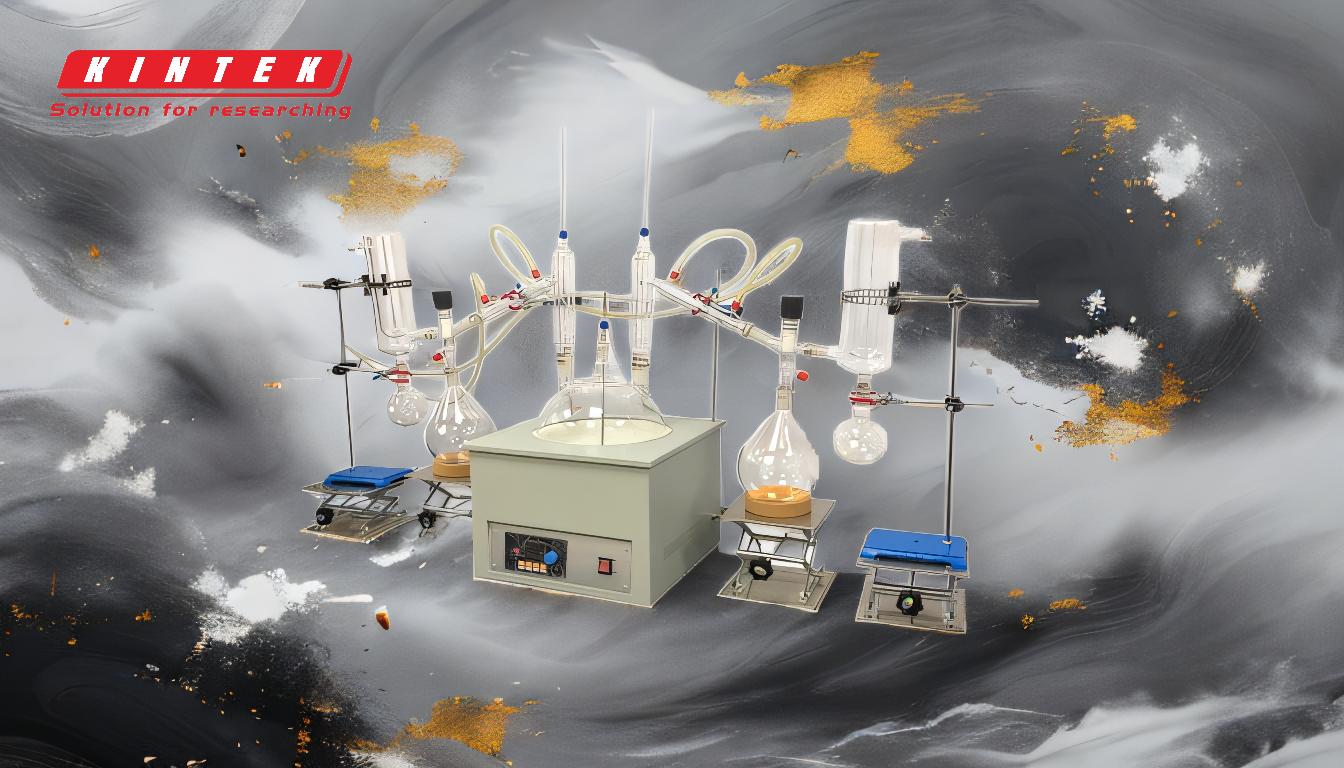Cleaning short path distillation equipment is a critical process to ensure the integrity of your experiments and the longevity of your equipment. Proper cleaning involves dismantling the apparatus, using appropriate solvents, and ensuring all components are free from residue. The process can be divided into quick cleaning for routine maintenance and thorough cleaning for more intensive maintenance. Below is a detailed explanation of how to clean short path distillation equipment effectively.
Key Points Explained:

-
Dismantle the Apparatus:
- Carefully disassemble the short path distillation system, including the boiling flask, condenser, vacuum trap, and receiving cow. This ensures that each component can be cleaned individually and thoroughly.
- Pay attention to joints and seals, as these areas are prone to residue buildup and require special attention.
-
Quick Cleaning Method:
- For routine maintenance, a quick flush with a solvent like acetone can be effective. This method is useful when the equipment is not heavily soiled.
- Pour a small amount of acetone into each glassware component and swirl it around to dissolve any residual material. Dispose of the solvent properly after use.
- This method is not sufficient for deep cleaning but is useful for maintaining cleanliness between more thorough cleanings.
-
Thorough Cleaning Method:
- For a more intensive cleaning, dismantle the entire apparatus and soak the glassware in a suitable solvent or cleaning solution. Acetone, isopropyl alcohol, or specialized glassware cleaning solutions can be used.
- Use brushes or pipe cleaners to scrub the interior surfaces, especially in narrow or hard-to-reach areas like condenser coils and joints.
- Rinse each component thoroughly with distilled water to remove any solvent or cleaning solution residue. Ensure that no cleaning agent is left behind, as it could contaminate future experiments.
-
Cleaning Joints and Seals:
- Remove any grease or residue from the joints using a solvent-soaked cloth or cotton swab. Reapply a thin layer of high-vacuum grease after cleaning to ensure a proper seal during reassembly.
- Inspect O-rings and seals for wear or damage. Replace any compromised components to maintain vacuum integrity.
-
Drying and Reassembly:
- Allow all cleaned components to air dry completely before reassembly. Moisture can interfere with vacuum performance and contaminate your distillation process.
- Reassemble the apparatus carefully, ensuring all joints are properly greased and tightened to maintain a vacuum-tight seal.
-
Post-Cleaning Inspection:
- After cleaning and reassembly, inspect the system for any signs of residue or damage. Run a test distillation with a small amount of solvent to ensure the system is clean and functioning properly.
-
Frequency of Cleaning:
- Clean the short path distillation equipment after each use to prevent residue buildup and cross-contamination between experiments.
- Perform thorough cleaning periodically, especially if you notice a decline in performance or contamination in your distillates.
By following these steps, you can maintain the efficiency and reliability of your short path distillation equipment, ensuring high-quality results in your experiments.
Summary Table:
| Step | Details |
|---|---|
| 1. Dismantle Apparatus | Disassemble components (boiling flask, condenser, vacuum trap, etc.) for individual cleaning. |
| 2. Quick Cleaning | Use acetone for routine maintenance; swirl and dispose of solvent properly. |
| 3. Thorough Cleaning | Soak glassware in acetone or isopropyl alcohol; scrub with brushes. Rinse with distilled water. |
| 4. Clean Joints/Seals | Remove grease with solvent; reapply high-vacuum grease; inspect O-rings. |
| 5. Dry & Reassemble | Air dry components completely; reassemble with proper greasing and sealing. |
| 6. Post-Cleaning Check | Inspect for residue; run a test distillation to ensure cleanliness. |
| 7. Cleaning Frequency | Clean after each use; perform thorough cleaning periodically. |
Need expert advice on maintaining your distillation equipment? Contact us today for personalized guidance!










